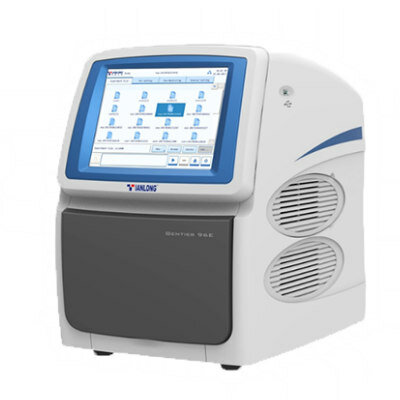Biomarker p-120 Catenin Distinguishes Conventional Urothelial Carcinoma from Variants
|
By LabMedica International staff writers Posted on 24 Aug 2021 |

Image: Histopathology of (a) Usual-type high-grade urothelial carcinoma and (b) Positive E-cadherin expression in usual-type high-grade urothelial carcinoma. (Photo courtesy of Emory University School of Medicine)
Plasmacytoid urothelial carcinoma (PC-UC) is an infrequent and clinically aggressive variant of urothelial carcinoma (UC). Initially, PC-UC was identified based on morphology as a potential mimicker of malignant plasma cell and lymphoid neoplasms and is characterized by loss of E-cadherin (E-Cad)–mediated intercellular adhesion.
Sarcomatoid UC, is another rare and aggressive variant of UC that includes carcinomatous and sarcomatous components (i.e., dedifferentiated carcinoma). The latter can be represented by a nondescript high-grade spindle cell proliferation and/or it can demonstrate more lineage-specific change, including, but not limited to, leiomyosarcomatous, rhabdomyosarcomatous, and chondrosarcomatous differentiation.
Pathologists at the Brigham and Women's Hospital (Boston, MA, USA) included in a study included a total of 58 samples from 55 patients, as three cases had areas of both PC-UC and SUC. The final breakdown included 25 conventional invasive UCs, 22 PC-UCs, six SUCs, and five micropapillary UCs. Specimen types included 45 transurethral resections/bladder biopsies, three cystoprostatectomies, one anterior pelvic exenteration, one abdominoperineal resection, two biopsies of tumor from metastatic sites (one pelvic soft tissue nodule and one peritoneal nodule), one nephroureterectomy, one penectomy, and one autopsy case.
The team performed immunohistochemistry with the Envision Plus/horseradish peroxidase system (Dako Agilent, Carpinteria, CA, USA), a polyclonal antibody to p-120 (BD Biosciences, San Jose, CA, USA), and monoclonal antibodies against E-Cad (Dako Agilent,) and B-Cat (BD Biosciences). Following Tris-buffered saline rinses, the tissues were incubated with the Envision Plus or Novolink Polymer Detection system (Leica Biosystems, Buffalo Grove, IL, USA). Eight PC-UC cases had molecular characterization via the OncoPanel assay developed at the institution.
The scientists reported that E-cadherin, B-Cat, and p-120 showed membranous staining in all conventional and micropapillary UCs. In contrast, most PC-UCs were negative for E-Cad (17/22; 77%) with an additional 2/22 cases (9%) showing cytoplasmic with partial membranous staining. p-120 catenin demonstrated cytoplasmic or negative staining in 21/22 cases (95%). Most SUCs showed an absence of E-Cad (5/6; 83%) and cytoplasmic or negative p-120 in 5/6 cases (83%). Staining for B-Cat was also abnormal in a subset of PC-UCs and SUCs. Five PC-UC cases that harbored CDH1 gene variants were p-120 cytoplasmic positive.
The authors concluded that p-120 catenin is a useful adjunct biomarker to E-Cad in the clinically important distinction of PC-UC and SUC from conventional UC. In particular, the combination of cytoplasmic p-120 and loss of E-Cad is strongly supportive of PC-UC and SUC. The study was published on August 21, 2021 in the journal Archives of Pathology and Laboratory Medicine.
Related Links:
Brigham and Women's Hospital
Dako Agilent
BD Biosciences
Leica Biosystems
Sarcomatoid UC, is another rare and aggressive variant of UC that includes carcinomatous and sarcomatous components (i.e., dedifferentiated carcinoma). The latter can be represented by a nondescript high-grade spindle cell proliferation and/or it can demonstrate more lineage-specific change, including, but not limited to, leiomyosarcomatous, rhabdomyosarcomatous, and chondrosarcomatous differentiation.
Pathologists at the Brigham and Women's Hospital (Boston, MA, USA) included in a study included a total of 58 samples from 55 patients, as three cases had areas of both PC-UC and SUC. The final breakdown included 25 conventional invasive UCs, 22 PC-UCs, six SUCs, and five micropapillary UCs. Specimen types included 45 transurethral resections/bladder biopsies, three cystoprostatectomies, one anterior pelvic exenteration, one abdominoperineal resection, two biopsies of tumor from metastatic sites (one pelvic soft tissue nodule and one peritoneal nodule), one nephroureterectomy, one penectomy, and one autopsy case.
The team performed immunohistochemistry with the Envision Plus/horseradish peroxidase system (Dako Agilent, Carpinteria, CA, USA), a polyclonal antibody to p-120 (BD Biosciences, San Jose, CA, USA), and monoclonal antibodies against E-Cad (Dako Agilent,) and B-Cat (BD Biosciences). Following Tris-buffered saline rinses, the tissues were incubated with the Envision Plus or Novolink Polymer Detection system (Leica Biosystems, Buffalo Grove, IL, USA). Eight PC-UC cases had molecular characterization via the OncoPanel assay developed at the institution.
The scientists reported that E-cadherin, B-Cat, and p-120 showed membranous staining in all conventional and micropapillary UCs. In contrast, most PC-UCs were negative for E-Cad (17/22; 77%) with an additional 2/22 cases (9%) showing cytoplasmic with partial membranous staining. p-120 catenin demonstrated cytoplasmic or negative staining in 21/22 cases (95%). Most SUCs showed an absence of E-Cad (5/6; 83%) and cytoplasmic or negative p-120 in 5/6 cases (83%). Staining for B-Cat was also abnormal in a subset of PC-UCs and SUCs. Five PC-UC cases that harbored CDH1 gene variants were p-120 cytoplasmic positive.
The authors concluded that p-120 catenin is a useful adjunct biomarker to E-Cad in the clinically important distinction of PC-UC and SUC from conventional UC. In particular, the combination of cytoplasmic p-120 and loss of E-Cad is strongly supportive of PC-UC and SUC. The study was published on August 21, 2021 in the journal Archives of Pathology and Laboratory Medicine.
Related Links:
Brigham and Women's Hospital
Dako Agilent
BD Biosciences
Leica Biosystems
Latest Immunology News
- Diagnostic Blood Test for Cellular Rejection after Organ Transplant Could Replace Surgical Biopsies
- AI Tool Precisely Matches Cancer Drugs to Patients Using Information from Each Tumor Cell
- Genetic Testing Combined With Personalized Drug Screening On Tumor Samples to Revolutionize Cancer Treatment
- Testing Method Could Help More Patients Receive Right Cancer Treatment
- Groundbreaking Test Monitors Radiation Therapy Toxicity in Cancer Patients
- State-Of-The Art Techniques to Investigate Immune Response in Deadly Strep A Infections
- Novel Immunoassays Enable Early Diagnosis of Antiphospholipid Syndrome
- New Test Could Predict Immunotherapy Success for Broader Range Of Cancers
- Simple Blood Protein Tests Predict CAR T Outcomes for Lymphoma Patients
- Cell Sorter Chip Technology to Pave Way for Immune Profiling at POC
- Chip Monitors Cancer Cells in Blood Samples to Assess Treatment Effectiveness
- Automated Immunohematology Approaches Can Resolve Transplant Incompatibility
- AI Leverages Tumor Genetics to Predict Patient Response to Chemotherapy
- World’s First Portable, Non-Invasive WBC Monitoring Device to Eliminate Need for Blood Draw
- Predictive T-Cell Test Detects Immune Response to Viruses Even Before Antibodies Form
- Single Blood Draw to Detect Immune Cells Present Months before Flu Infection Can Predict Symptoms
Channels
Clinical Chemistry
view channel
3D Printed Point-Of-Care Mass Spectrometer Outperforms State-Of-The-Art Models
Mass spectrometry is a precise technique for identifying the chemical components of a sample and has significant potential for monitoring chronic illness health states, such as measuring hormone levels... Read more.jpg)
POC Biomedical Test Spins Water Droplet Using Sound Waves for Cancer Detection
Exosomes, tiny cellular bioparticles carrying a specific set of proteins, lipids, and genetic materials, play a crucial role in cell communication and hold promise for non-invasive diagnostics.... Read more
Highly Reliable Cell-Based Assay Enables Accurate Diagnosis of Endocrine Diseases
The conventional methods for measuring free cortisol, the body's stress hormone, from blood or saliva are quite demanding and require sample processing. The most common method, therefore, involves collecting... Read moreMolecular Diagnostics
view channel
Unique Autoantibody Signature to Help Diagnose Multiple Sclerosis Years before Symptom Onset
Autoimmune diseases such as multiple sclerosis (MS) are thought to occur partly due to unusual immune responses to common infections. Early MS symptoms, including dizziness, spasms, and fatigue, often... Read more
Blood Test Could Detect HPV-Associated Cancers 10 Years before Clinical Diagnosis
Human papilloma virus (HPV) is known to cause various cancers, including those of the genitals, anus, mouth, throat, and cervix. HPV-associated oropharyngeal cancer (HPV+OPSCC) is the most common HPV-associated... Read moreHematology
view channel
Next Generation Instrument Screens for Hemoglobin Disorders in Newborns
Hemoglobinopathies, the most widespread inherited conditions globally, affect about 7% of the population as carriers, with 2.7% of newborns being born with these conditions. The spectrum of clinical manifestations... Read more
First 4-in-1 Nucleic Acid Test for Arbovirus Screening to Reduce Risk of Transfusion-Transmitted Infections
Arboviruses represent an emerging global health threat, exacerbated by climate change and increased international travel that is facilitating their spread across new regions. Chikungunya, dengue, West... Read more
POC Finger-Prick Blood Test Determines Risk of Neutropenic Sepsis in Patients Undergoing Chemotherapy
Neutropenia, a decrease in neutrophils (a type of white blood cell crucial for fighting infections), is a frequent side effect of certain cancer treatments. This condition elevates the risk of infections,... Read more
First Affordable and Rapid Test for Beta Thalassemia Demonstrates 99% Diagnostic Accuracy
Hemoglobin disorders rank as some of the most prevalent monogenic diseases globally. Among various hemoglobin disorders, beta thalassemia, a hereditary blood disorder, affects about 1.5% of the world's... Read moreImmunology
view channel
Diagnostic Blood Test for Cellular Rejection after Organ Transplant Could Replace Surgical Biopsies
Transplanted organs constantly face the risk of being rejected by the recipient's immune system which differentiates self from non-self using T cells and B cells. T cells are commonly associated with acute... Read more
AI Tool Precisely Matches Cancer Drugs to Patients Using Information from Each Tumor Cell
Current strategies for matching cancer patients with specific treatments often depend on bulk sequencing of tumor DNA and RNA, which provides an average profile from all cells within a tumor sample.... Read more
Genetic Testing Combined With Personalized Drug Screening On Tumor Samples to Revolutionize Cancer Treatment
Cancer treatment typically adheres to a standard of care—established, statistically validated regimens that are effective for the majority of patients. However, the disease’s inherent variability means... Read moreMicrobiology
view channel
Mouth Bacteria Test Could Predict Colon Cancer Progression
Colon cancer, a relatively common but challenging disease to diagnose, requires confirmation through a colonoscopy or surgery. Recently, there has been a worrying increase in colon cancer rates among younger... Read more.jpg)
Unique Metabolic Signature Could Enable Sepsis Diagnosis within One Hour of Blood Collection
Sepsis is a life-threatening condition triggered by an extreme response of the body to an infection. It requires immediate medical intervention to prevent potential death or lasting damage.... Read moreTechnology
view channel
New Diagnostic System Achieves PCR Testing Accuracy
While PCR tests are the gold standard of accuracy for virology testing, they come with limitations such as complexity, the need for skilled lab operators, and longer result times. They also require complex... Read more
DNA Biosensor Enables Early Diagnosis of Cervical Cancer
Molybdenum disulfide (MoS2), recognized for its potential to form two-dimensional nanosheets like graphene, is a material that's increasingly catching the eye of the scientific community.... Read more
Self-Heating Microfluidic Devices Can Detect Diseases in Tiny Blood or Fluid Samples
Microfluidics, which are miniature devices that control the flow of liquids and facilitate chemical reactions, play a key role in disease detection from small samples of blood or other fluids.... Read more
Breakthrough in Diagnostic Technology Could Make On-The-Spot Testing Widely Accessible
Home testing gained significant importance during the COVID-19 pandemic, yet the availability of rapid tests is limited, and most of them can only drive one liquid across the strip, leading to continued... Read moreIndustry
view channel
ECCMID Congress Name Changes to ESCMID Global
Over the last few years, the European Society of Clinical Microbiology and Infectious Diseases (ESCMID, Basel, Switzerland) has evolved remarkably. The society is now stronger and broader than ever before... Read more
Bosch and Randox Partner to Make Strategic Investment in Vivalytic Analysis Platform
Given the presence of so many diseases, determining whether a patient is presenting the symptoms of a simple cold, the flu, or something as severe as life-threatening meningitis is usually only possible... Read more
Siemens to Close Fast Track Diagnostics Business
Siemens Healthineers (Erlangen, Germany) has announced its intention to close its Fast Track Diagnostics unit, a small collection of polymerase chain reaction (PCR) testing products that is part of the... Read more















